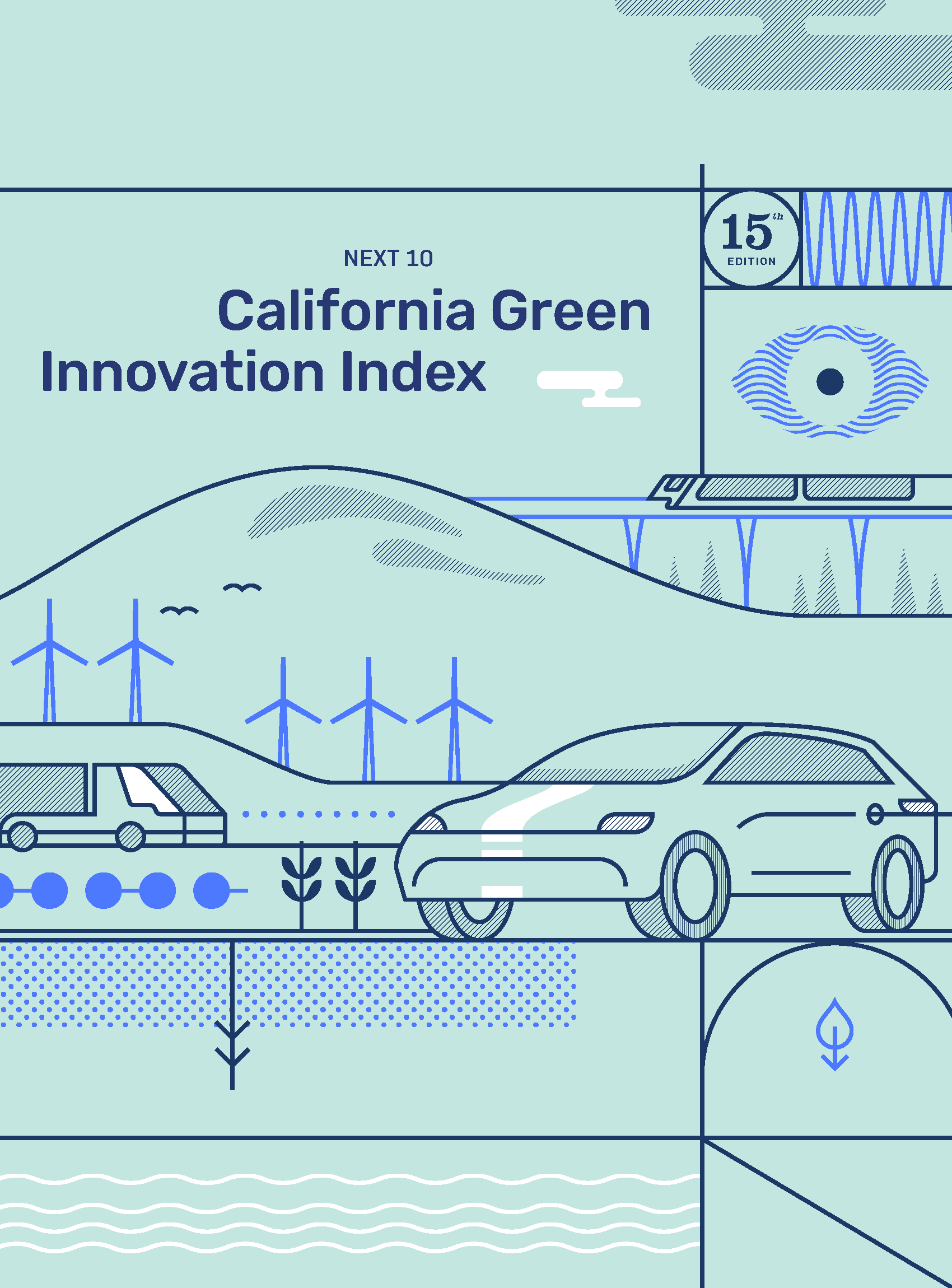
The Clean Energy program focuses on the link between California’s environment and economy and aims to help identify challenges, opportunities, and trends as the state looks to grow its economy while achieving ambitious environmental goals. The flagship publication within this program area is the annual California Green Innovation Index, the latest of which is the 15th edition, published in 2024. It tracks a variety of environmental and economic indicators over time, comparing California’s performance to states across the U.S. and to some of the world’s largest economies. Other recent work in the Clean Energy program has focused on the future of California’s grid, challenges to meeting our zero-emission vehicle (ZEV) goals, and environmental and economic impacts of some of the state’s leading climate policies, such as cap and trade, in disadvantaged communities.

2023 California Green Innovation Index
The 15th annual California Green Innovation Index is primarily digital, allowing readers to learn and interact with the findings of the report in an interactive medium. New this year, interactive charts allow readers to dive even deeper into the data. To get the full experience of the report's findings, visit the California Green Innovation Index website.